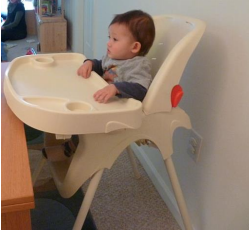5.1: Piaget
- Page ID
- 138339
\( \newcommand{\vecs}[1]{\overset { \scriptstyle \rightharpoonup} {\mathbf{#1}} } \) \( \newcommand{\vecd}[1]{\overset{-\!-\!\rightharpoonup}{\vphantom{a}\smash {#1}}} \)\(\newcommand{\id}{\mathrm{id}}\) \( \newcommand{\Span}{\mathrm{span}}\) \( \newcommand{\kernel}{\mathrm{null}\,}\) \( \newcommand{\range}{\mathrm{range}\,}\) \( \newcommand{\RealPart}{\mathrm{Re}}\) \( \newcommand{\ImaginaryPart}{\mathrm{Im}}\) \( \newcommand{\Argument}{\mathrm{Arg}}\) \( \newcommand{\norm}[1]{\| #1 \|}\) \( \newcommand{\inner}[2]{\langle #1, #2 \rangle}\) \( \newcommand{\Span}{\mathrm{span}}\) \(\newcommand{\id}{\mathrm{id}}\) \( \newcommand{\Span}{\mathrm{span}}\) \( \newcommand{\kernel}{\mathrm{null}\,}\) \( \newcommand{\range}{\mathrm{range}\,}\) \( \newcommand{\RealPart}{\mathrm{Re}}\) \( \newcommand{\ImaginaryPart}{\mathrm{Im}}\) \( \newcommand{\Argument}{\mathrm{Arg}}\) \( \newcommand{\norm}[1]{\| #1 \|}\) \( \newcommand{\inner}[2]{\langle #1, #2 \rangle}\) \( \newcommand{\Span}{\mathrm{span}}\)\(\newcommand{\AA}{\unicode[.8,0]{x212B}}\)
Piaget e Inteligencia Sensorimotora
| Subestación | Edad | Descripción |
|---|---|---|
| Subestación Uno: Reflejos Simples | Nacimiento a 1 mes | Este aprendizaje activo comienza con movimientos automáticos o reflejos. Una pelota entra en contacto con la mejilla de un bebé y es automáticamente chupada y lamida. |
| Subetapa Dos: Reacciones Circulares Primarias | 1 a 4 meses | El infante comienza a discriminar entre objetos y ajustar las respuestas en consecuencia a medida que los reflejos son reemplazados por movimientos voluntarios. Un bebé puede involucrarse accidentalmente en un comportamiento y encontrarlo interesante como hacer una vocalización. Este interés motiva intentar volver a hacerlo y ayuda al infante a aprender un nuevo comportamiento que originalmente ocurrió por casualidad. Al principio, la mayoría de las acciones tienen que ver con el cuerpo, pero en los próximos meses, se dirigirán más hacia los objetos. |
| Subetapa Tres: Reacciones Circulares Secundarias | 4 a 8 meses | El infante se involucra cada vez más activamente en el mundo exterior y se deleita en poder hacer que las cosas sucedan. El movimiento repetido trae especial interés ya que el bebé es capaz de golpear dos tapas juntas desde el armario cuando está sentado en el piso de la cocina. |
| Subetapa Cuatro: Coordinación de reacciones circulares | 8 a 12 meses | El infante puede participar en comportamientos que otros realizan y anticipar los próximos eventos. Quizás por la continua maduración de la corteza prefrontal, el infante se vuelve capaz de tener un pensamiento y llevar a cabo una actividad planificada, dirigida por objetivos como buscar un juguete que haya rodado bajo el sofá. El objeto sigue existiendo en la mente del infante incluso cuando está fuera de la vista y el infante ahora es capaz de hacer intentos de recuperarlo. |
| Subetapa Cinco: Reacciones Circulares Terciarias | 12 a 18 meses | El infante se involucra más activamente en la experimentación para aprender sobre el mundo físico. La gravedad se aprende vertiendo agua de una taza o empujando los cuencos de las sillas altas. El cuidador trata de ayudar al niño recogiéndolo de nuevo y colocándolo en la bandeja. ¿Y qué pasa? ¡Otro experimento! El niño vuelve a sacarlo de la bandeja provocando que se caiga y ¡el cuidador lo recoja de nuevo! |
| Subetapa Seis: Internalización de Esquemas y Pensamiento Representacional Temprano | 18 meses a 2 años |



